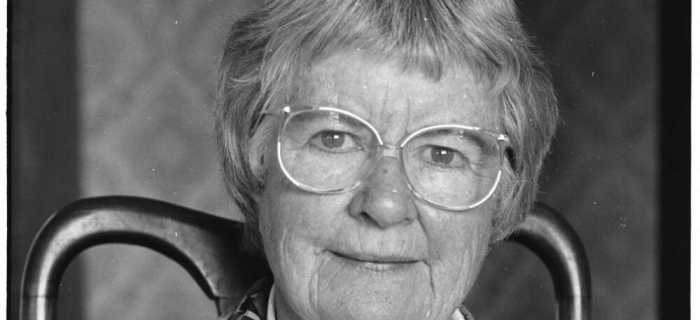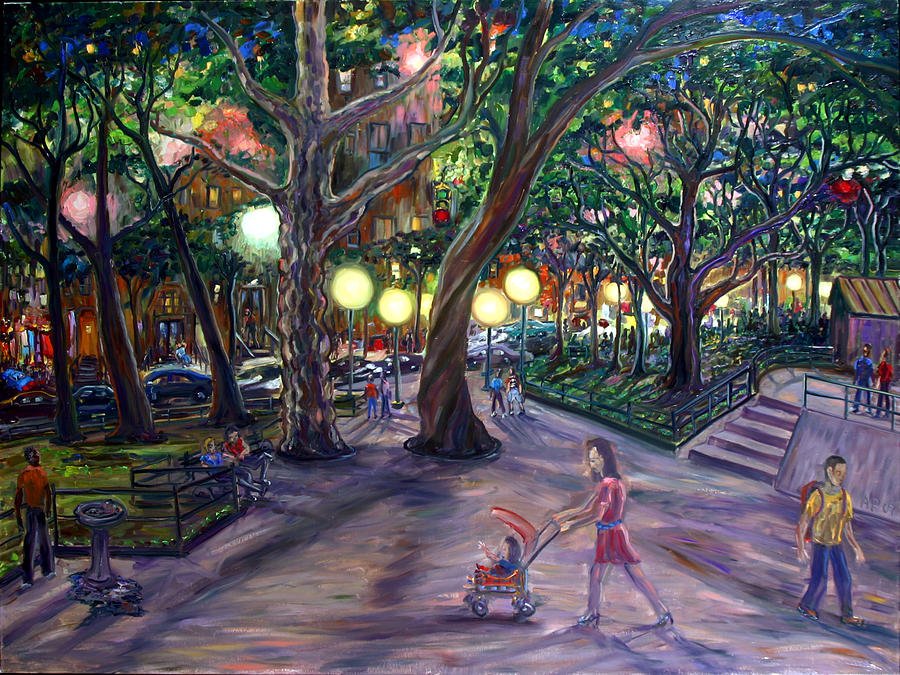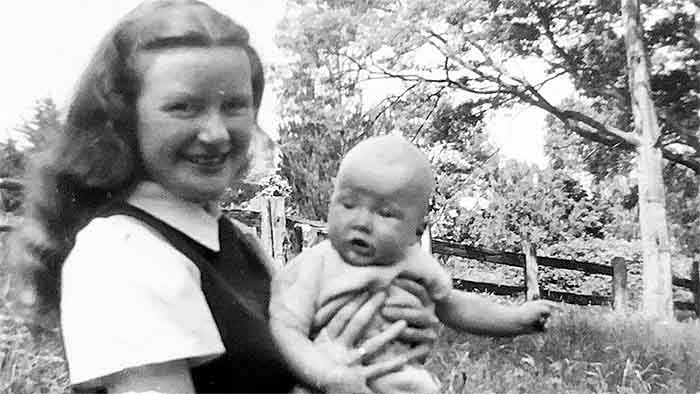The Quietly Subversive Poems of Gwen Harwood
When people mention the sonnet––the classical form of poem with fourteen lines written in iambic pentameter, names that come to mind are those of the 14th century Italian poet Petrarch, of the 16th century Edmund Spencer, of William Shakespeare, of John Milton and the like. Who would associate the sonnet with an Australian housewife in the mid-20thcentury called Gwen Harwood? Yet, although largely unknown internationally, Gwen Harwood (1920-1995) is one of Australia’s finest as well as most (quietly) subversive poets. While traditionally the sonnet is associated with the male poetic voice to express romantic love for an unattainable goddess or unfulfilled political ambition, Harwood moulded it into the poetic form for songs of Australian suburban housewives.

Yet Harwood’s poems and the classical sonnets do have certain things in common. They both thrive on depicting tensions and conflicts. Like all good poetry, they touch the human heart and soul through portraying the universal struggle of despair and hope, aspirations and the loss of dreams. And they are both deeply embedded in their respective historical and social contexts. Because true poetry explores the mysteries of human experience, thus raising questions that challenge habitual views and actions, it may even become the catalyst for social change. Gwen Harwood’s “suburban sonnets” are good illustrations of poetry’s engagement with contemporary society of her own time. Two of her poems, “In the Park” and “Suburban Sonnet: Boxing Day,” portray vividly the inner tensions of Australian housewife figures of the 1950s’. They give voice to the voiceless women feeling trapped in domesticity and unfulfilled lives. The subversive power of her poems is not only seen through the contrast between strong emotions and mundane topics they portray, but also through her unusual choice of the form; she appropriated the predominantly male form of the sonnet for romance to serve the persona of the disillusioned housewife.
In the Park
Published in 1961 under the disguise of Walter Lehmann, “In the Park” (Harwood 65) describes a brief chance meeting of a mother of three young children with her former lover. It is a sonnet of two quatrains and a sestet, in iambic pentameter with a rhyme-scheme of abba cddc efgefg. The first quatrain sets the scene: A mother of three sits in the park, having a hard time handling her children, when her former lover passes by.
She sits in the park. Her clothes are out of date.
(lines 1-4)
Two children whine and bicker, tug her skirt.
A third draws aimless patterns in the dirt
Someone she loved once passed by – too late …
The second quatrain switches to his perspective and impression on the changes in her:
… to feign indifference to that casual nod.
(lines 5-8)
“How nice” et cetera. “Time holds great surprises.”
From his neat head unquestionably rises
a small balloon… “but for the grace of God…”

The sestet switches back to the perspective of the woman, who is caught up between keeping the happy façade of motherhood and feeling the inner struggle.
They stand a while in flickering light, rehearsing
(lines 9-14)
the children’s names and birthdays. “It’s so sweet
to hear their chatter, watch them grow and thrive, ”
she says to his departing smile. Then, nursing
the youngest child, sits staring at her feet.
To the wind she says, “They have eaten me alive.”
In the “flickering light” she dutifully repeats the “rehearsed” words that meet the social expectations of a content housewife and mother: “It’s so sweet to hear their chatter, watch them grow and thrive.” Yet in reality she is wearied by their whining and bickering. Her true feeling can only be told to the wind: “They have eaten me alive.” A mother’s sacrifice for her children is a common literary theme, but this poem has none of the conventional glorious terms applied to motherhood. Instead, it turns the form of sonnet – traditionally used for the praise of romantic love – into a woman’s complaint for her unfulfilled self, trapped in a social role not of her choice.
Suburban Sonnet: Boxing Day
“Suburban Sonnet: Boxing Day” (Harwood 157), published under the nom de plume of Miriam Stone, also utilises the sonnet form to explore the inner world of a suburban housewife. The poem is structured with an octave and a sestet, in basic iambic pentameter with a rhyme-scheme of abbacddc efggfe. The octave presents the outward image of the housewife-mother, set against the messy, chaotic domestic scene after the Christmas Day party:
Gold, silver, pink and blue, the globes distort her,
framed in the doorway: woman with a broom.
Wrappings and toys lie scattered round the room.
A glossy magazine the children bought her
lies open: How to keep your husband’s love.
She stands and stares, as if in recollection,
at her own staring acid-pink reflection.
The simple fact is, she’s too tired to move.
(lines 1-8)
Her image is distorted by colourful lights of party globes, “framed in the doorway,” “with a broom.” This is the distortion and fragmentation of her inner world. She “stands and stares,” perhaps dazed by the absurdity of the magazine headline, “How to keep your husband’s love,” or perhaps shocked by her own unrecognisable appearance in the reflection, or maybe simply “too tired to move.” The fierce inner struggle contrasted with her dazed stillness is drawn out in the sestet. One hears her internal cry, lamenting the bygone love’s glamour and fervour brought to mind by the weary and dreary lack of appreciation and importance of the present. While “In the Park” is silent about the woman’s romantic past, a remembrance of yesterday’s passion is given here:
O where’s the demon lover, the wild boy
who kissed the future to her flesh beneath
what skies, what stars, what space! And swore to her
through hell’s own fires? …
(lines 9-12a)

That “future” has become her present, but love’s excitement and adventure have turned into domestic chores and mental and physical exhaustion. Aspirations for “skies,” “stars,” and “space” have been replaced by party globes, gift wrappings and scattered toys.
… A child stretches above her
and, laughing, crowns her with a tinsel wreath.
She gathers up a new, dismembered toy.
(lines 12b-14)
The “dismembered toy” represents the image of a broken body, and echoes the distorted image presented in the opening line of this poem, as well as the last line of “In the Park”: “They have eaten me alive.” Harwood once suggested that, in a biblical sense, as the Bread of Life is given and eaten literary, “a woman gives her body to her children” (Sheridan 146). In both poems the children, instead of being sweet and loveable as in conventional representations, appear as accomplices of a society that confines the woman to the domain of housekeeping and child-rearing, at the expense of her own intellectual and creative pursuits. The image of the woman crowned with a tinsel wreath by a laughing child alludes to that of the self-sacrificing Christ crowned with thorns by a mocking crowd.
Through their portrayal of the inner struggles of suburban housewives, both poems bring people face-to-face with women’s gender roles and identities in larger society. In this sense Harwood challenged a social norm through literary means, by bending the traditionally male-dominated form of sonnet to “bear the load of domesticity’s ‘unpoetic’ material,” once held in disdain for being banal and trivial (Sheridan 150). In Trigg’s words, Harwood inaugurated in Australian poetry the “genre of women’s writing … whereby women give voice to the constraints of domesticity” (37-38).
The apparent banality and triviality of her subject matter is precisely – and paradoxically – where the power of Harwood’s transforming art is hidden. It is not news that poetry can confront social issues and subvert social norms. But true poetry seeks influence not by dictating on people’s intellectual choice, but through exploring unique and universal human experiences. In this regard art is different from propaganda. It aims not to inculcate statements, but to raise questions and invite interpretations. It is in this sense that Harwood’s “suburban sonnets” about housewives exemplify not only good poetry but also the power of poetry’s engagement with social tensions.
Works cited
Harwood, Gwen. Gwen Harwood: Collected Poems, edited by Alison Hoddinott and Gregory Kratzmann. University of Queensland Press, 2003.
Sheridan, Susan. “Suburban Sonnets: ‘Mrs Harwood’, Miriam Stone and Domestic Modernity.” Australian Literary Studies vol. 23 no. 2, 2007, pp. 140–52.
Trigg, Stephanie. Gwen Harwood. Oxford University Press, 1994.
What do you think? Leave a comment.











I always thought sonnets were for Shakespearean love stories, but here she is showing the struggles of motherhood and domestic life.
Harwood’s work is beautiful and enduring. One of Australia’s greats.
Women writing poetry in Australia today owe her a great deal.
She low key changed my life.
I’ve been doing a bit of research on Harwood – I can now see a connection with Aphra Behn – both were writing when a woman’s concerns would not have been expressed. It is a characteristic of a patriarchal society for men to have the vast majority of power and for the women to be marginalised due to their supposedly inferior qualities, such as emotional and physical weakness. And a number of Gwen’s poems express her concerns about the way women are placed into stereotypical roles, forget the other aspects of their lives and simply be content with the joys and burdens of motherhood. There was a movie recently called “An Education” – based on the true life story of Lyn Barber concerning itself with women’s freedoms of choice – themes expressed also within the annals of feminism.
Lovely work! I had never heard of Gwen Harwood before, but her sonnets are clever, beautiful, and piercing. They remind me of a course I once took called Women in Literature/Women in Religion (it was called a “linked” course, double the length of a standard one. Everyone at my college had to take one, so several departments would offer them in any given semester). Harwood would’ve fit right in.
A poet that reminds me a bit of Harwood would be Elizabeth Jennings – (1926-2000) a similar quiet intensity.
What I like in GH is her attention to “light & dark” & how they meet yet remain distinct. A balance she found – in both a literal & metaphorical sense.
There is much that’s pungent in her work!
I read that Gwen said she found so much (all) her inspiration came from her childhood. I am just reading something at the mo on Virginia Woolf re the impact of her childhood on her life & work – a v different scenario, no doubt, to Gwen’s childhood but equally fascinating.
Some one of our company suggested earlier a resemblance of Behn and Harwood, and I like that. It’s not only in the dramatic instinct of both (and the love of playing parts) but in the sociability. Many of Harwood’s poems are dedicated. She was not as isolated as it might appear: perhaps there is much intenser camaraderie when poets and artists feel marginalised and relegated to the provincial. I can imagine Gwen, Behn and companions sitting around eating steak or swan and drinking claret, improvising spoofs and ironical quatrains, and no-one with a little phial of poison strong enough to spoil the fest.
It might raise a question as to whether Gwen H. would have been aware of Behn’s work (in those pre-internet days, in that marginalised provincial…)
Her writing is really passionate and sensual. Carnal Knowledge is my favorite.
Her poetry style is not the type I usually like, and I couldn’t relate much to the poems at all.
Her themes of motherhood shattered me into a million pieces. Love her poems.
My feminist queen!
The poems were emotionally powerful and some even made me shed a tear.
What that is particularly refreshing about her writing is the musical vein that she embodies in her poetry.
I don’t read a lot of poetry, but I like her writing.
An interesting discussion in her book was how Harwood gives us layers and layers of fake memoir which is cool and I would like to learn to do more of that.
It’s weird how painfully familiar her poems are. Consider me a fan.
Her work may be wonderful to explore but she’s always felt like a tag-along to the 20th century philosophical giants of Europe like Rainer Maria Rilke and Ludwig Wittgenstein.
Loved this article. Reminder to self: read more of Harwood’s stuff
Harwood’s take on the sonnet form is really refreshing and powerful.
I get that Harwood was trying to make a point, but poetry about being tired and cleaning up after kids feels a bit… underwhelming. Maybe it’s just not my thing.
Gwen Harwood is an icon.
Gwen has become one of my favourite poets.
Amazing use of poetic techniques alongside important themes.
I’ve loved Gwen Harwood since first coming across her in VCE English.
Never heard of her before, but I’m glad I have now! I feel like I can actually feel the housewives exhaustion.
Great for studying poetry at school.
What?
Harwood’s voice is quite liberal, and to me liberal seems conservative.
Her poem The Hospital made me cry.
Harwood’s poetry is evocative.
This piece has inspired me to revisit her poetry. Thank you!
It makes you think about how art can shift perspectives on social issues without being in your face about it.
A wonderful poet and a brilliant write up.
Who knew an Aussie housewife could be so badass with poetry?
The way she captures exhaustion and frustration is legit.